Kawanishi
N1K2-J
'George'
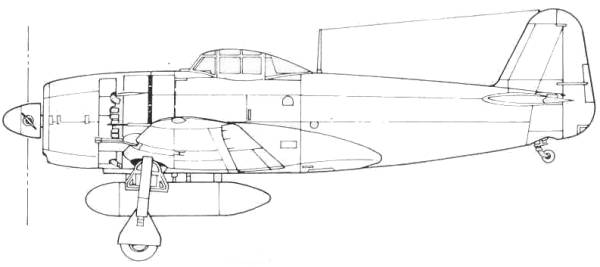
The Kawanishi N1K2-J was
designed during the service trials of the N1K1-J as an advanced
version. The primary reason for the redesign was to eliminate the
need for the long and complex main gear of the earlier version. To
achieve this goal the wings were moved from the mid position to the
lower fuselage. Conventional main gear legs of reduced length were
adopted and the fuselage and tail surfaces were redesigned. The
result was a virtually new aircraft retaining only the wings and
armament of the N1K1-Jb. In its prototype form the aircraft featured
a cleaner cowling for the Homare 21 engine, but to achieve
standardization, this was replaced on production aircraft by a
cowling similar to that fitted to the N1K1-J. The prototype was
flown for the first time on December 31, 1943 and successfully
completed it manufacturer trials within fifteen weeks before being
handed over to the Navy in April 1944. Despite continuing problems
with the Homare engine the Navy realized it had a winner on its
hands and authorized quantity production prior to the completion of
the service trials. Unfortunately for the Japanese production fell
considerably behind schedule due to bombing raids which led to
shortages of engines and equipment. In operation the N1K2-J revealed
itself as a truly outstanding fighter capable of meeting on equal
terms the best Allied fighters. However against the high flying
B-29's it was less successful as its climbing speed was insufficient
and the power of its Homare engine fell off rapidly at high
altitudes. Including prototypes a total of 431 N1K2-J's were
produced by the end of the war.
The
Kit
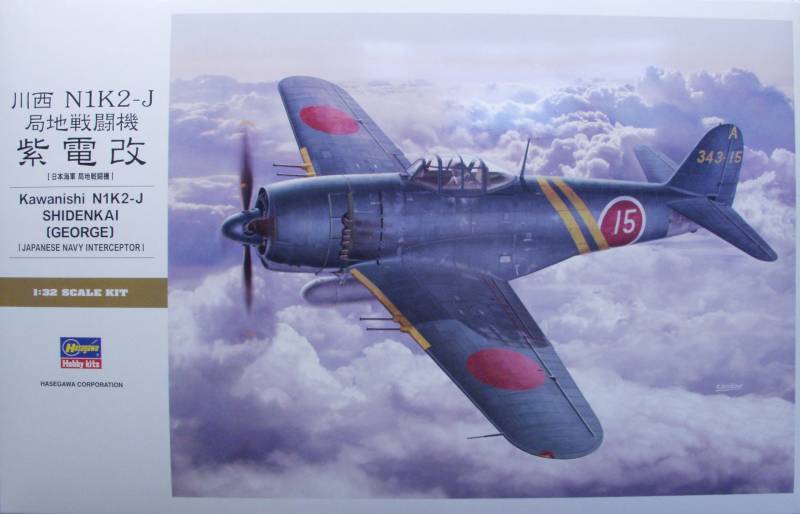
The Hasegawa N1K2-J comes in a
large top open box befitting the scale with the usual high quality
artwork on the top. Inside the box are two large and two small
cellophane bags containing eight sprues of medium gray plastic and one
sprue of clear plastic. The largest of the bags contains four sprues
which make up the fuselage, wings, horizontal stabilizers, engine and
landing gear. The second largest bag contains three sprues which have
the tail, interior detail, drop tank and a pilot figure. The smallest
bag has the engine cowling and the last bag has the clear parts. While I
don't like to see multiple sprues in a bag, at least in my kit
everything survived with no damage or parts knocked off the sprues.
If you have purchased any of the more recent Hasegawa kits you
will find the same quality of molding and detail level in this kit. The
only thing I found in the way of surface defects were some slightly
sunken spots near the ends of the horizontal stabilizer parts from a
large hole molded on the inside of these parts, the purpose of which is
unknown. The holes are deep enough that the top surface is very thin, so
thin that you can easily see light through it. It may not be an issue
once painted.
The
tail is a separate assembly that plugs into the rear of the fuselage.
I'm always leery about set ups like that so I hope Hasegawa's
engineering is good. The cockpit is well appointed and should please
most except those with AMS. It is built up as a separate assembly then
install in the fuselage after the fuselage is assembled. A decal is
supplied for the instruments. The instruments are raised detail with
interiors that can be painted or dry brushed if you have the talent.The
engine is also very complete lacking only an ignition harness to set it
off.The propeller blades are individual but are keyed so you don't need
to worry about setting the blade angle. The kit comes with a drop tank.
The wheels are not weighted but do have separate inner and outer hubs
that eliminate masking. The kit has a nicely done multi part pilot
figure that has a choice of two different heads with different head
gear. I don't do parts counts anymore, I'm not convinced anyone cares
but if it is that important to you count them on the sprue photos below.
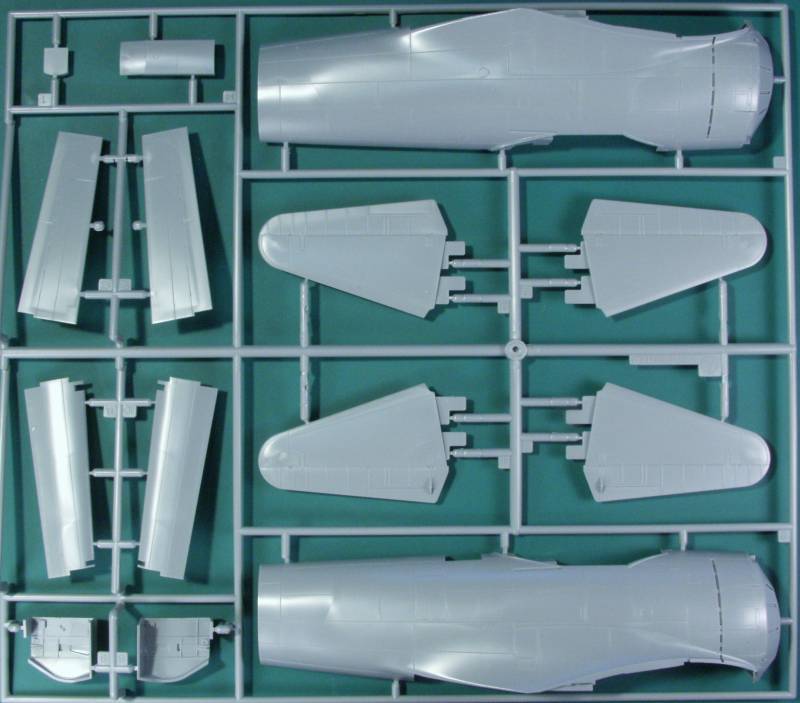
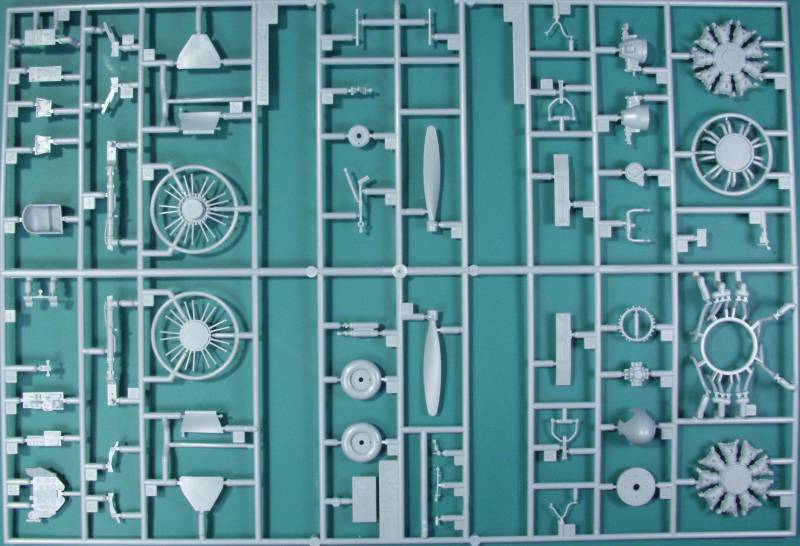
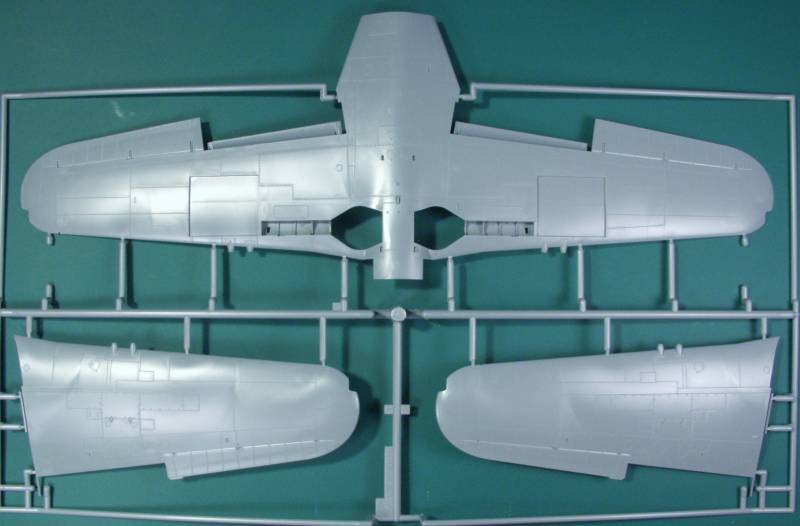

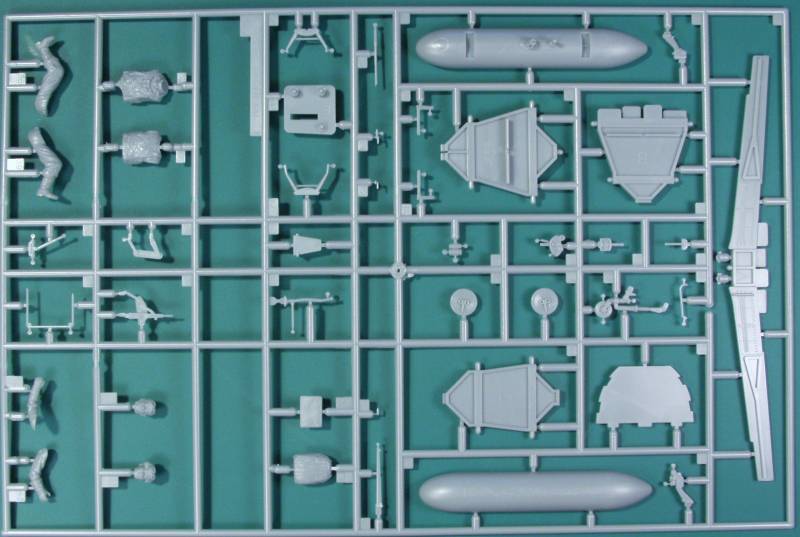
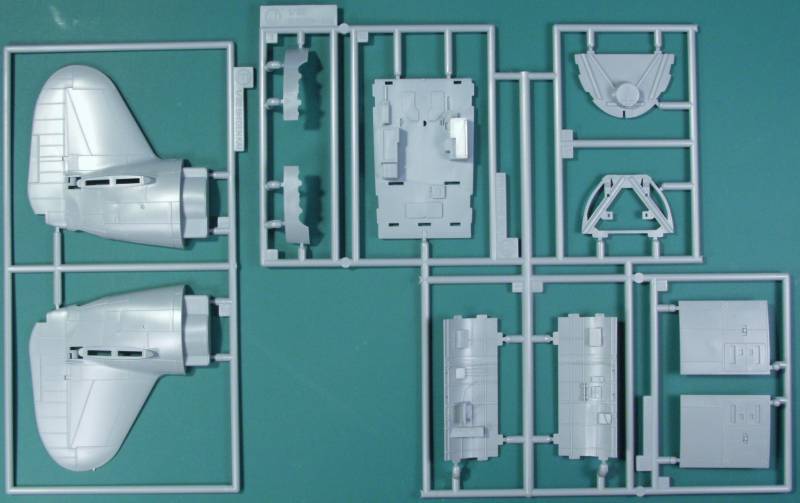
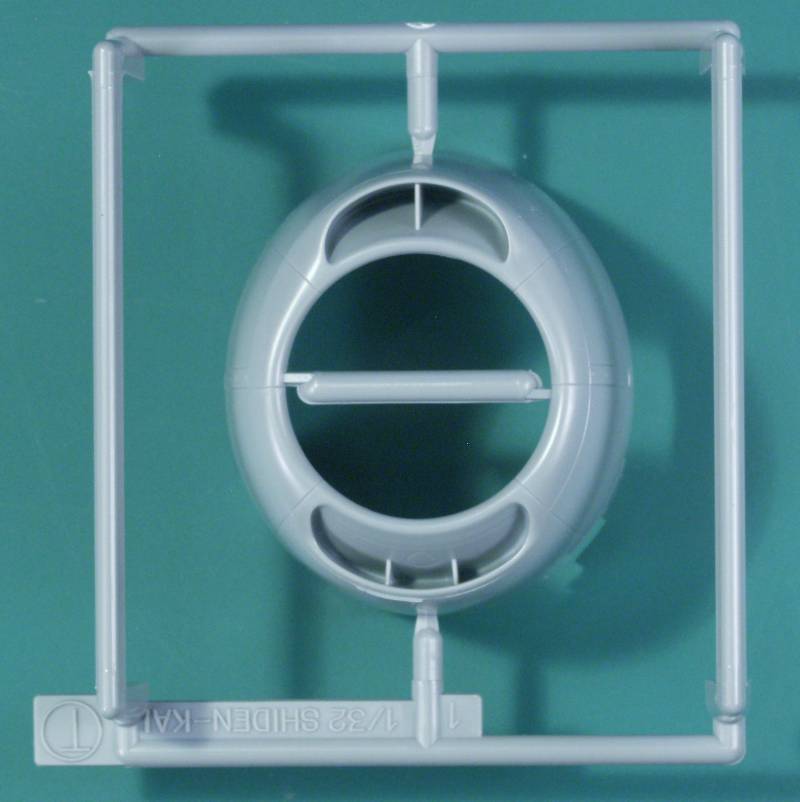
The
clear parts are crystal clear and thin and the frame line are
well defined. There are separate back pieces to use depending on
whether you display the canopy open or closed. See below.
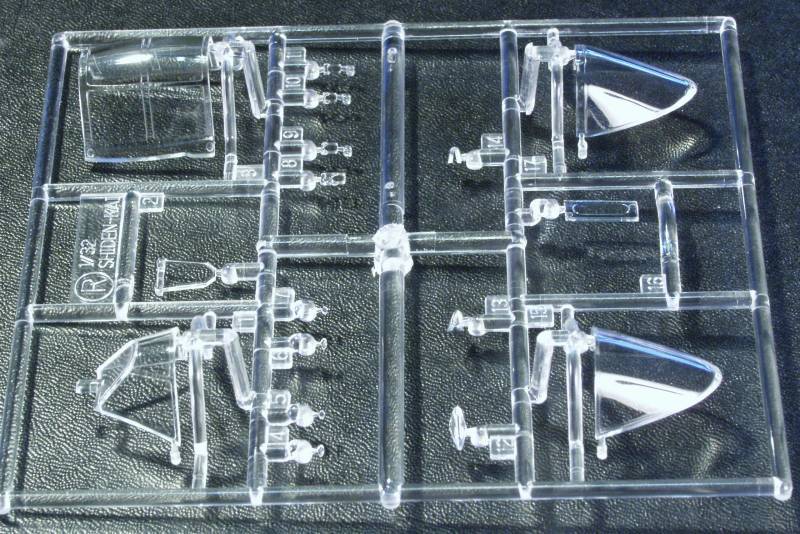
The
decals are in register and look a little thick to my eye but not
nearly as bad as many Tamiya decals. They do appear to be
opaque.There are a bunch of stencils supplied. The sheet
supplies markings for two aircraft, both from the 343rd Naval
Flying group the 301st and 407th Fighter Squadrons. The stripes
are supplied for both of these but I personally would prefer to
paint them on. See below.
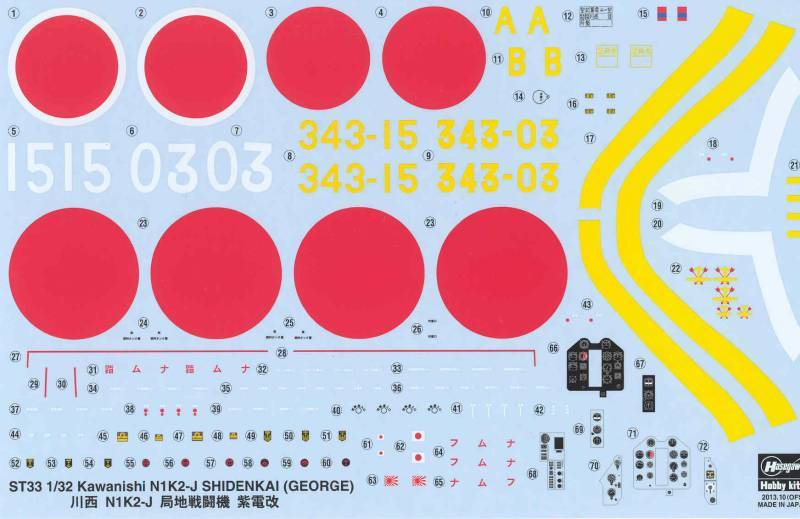
The
instructions
are in the form of a 12 page booklet that is
stapled together. Page 1 has the history in
Japanese and English. Page 2 has a parts map and
color chart with Gunze numbers and generic names.
Pages 3 through 9 are the assembly steps, pages 10
and 11 have the painting and marking instructions
and page 12 has decal instructions and the usual
safety warnings. The assembly steps are all very
clearly illustrated with the various options
marked.
After
Market
Goodies
At
the time of this review the kit was still fairly new and no
after market was available as far as I know. I'm sure Eduard
will do masks and PE for it in time. If I decide to get any I
will post it here at that time.
Conclusions
This is another really lovely
kit that should provide not only an easy build fit wise but
a nicely detail model right out of the box, highly recommend
to all but very beginners.
Links
to kit build or reviews
A build / review can be found here.
References
Japanese Aircraft of the Pacific War
by R.J. Francillon
Back to the 1/32
Scale Japanese Aircraft Page
Updated 12/27/13










